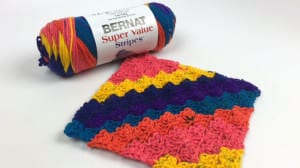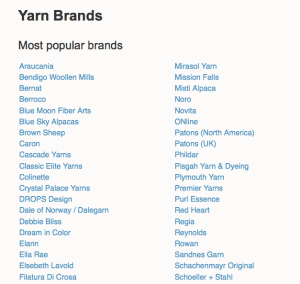
What Are the Brand Equivalents?
We are generally asked what the substitutions of yarn are for outside of Canada / USA for patterns and videos that we feature.
Truthfully, I don't know the answer first hand and turned to The Crochet Crowders to help us comprise a list of substitutes. The information below is information that was shared to us. Most of the responders directed me to Ravelry as this information is there.
While Yarnspirations does ship beyond the Canadian and USA borders to other regions of the world, other yarn companies do not. It's up to the retailers to stock the yarn in other countries and those locations are unknown to me.
The biggest difference between the yarns across the world is the thickness. While most, if not all, yarn companies here in North America following the Yarn Craft Council Standards. This council is about creating the standards so that yarn balls fall into a class of weight which is usually contributed by the thickness of the yarn.
Here in North America, many of us use 4 Ply Worsted by the plies can be different thicknesses. For example, I've come to understand that in another country, the equivalent can be a 12 ply. It just means that their starting plies are much thinner if 12 plies of one yarn can equal 4 plies of another.
You Get What You Pay For
Acrylic yarns can vary from brand to brand as well as company to company. There is value acrylic and premium acrylic. The difference to you and I is the softness. Sometimes I can be cheap and expect champagne on a beer budget.
Mixing the blends of yarns with animal fibers, unnatural materials or acrylic can change the look, feel and strength. It's all relative.
The materials of the yarn can mean the difference of a yarn colour being vibrant, long lasting and can impact the retail shelf value.
For example, variegated yarn is usually less yardage per ball verses a solid colour ball in the same yarn line. Companies package the yarn to a certain price point. There is a considerable amount of extra labour involved in making variegated yarn verses the solid colour yarn. This change of packaging from solid to variegated allows a retailer to put the entire brand as one price instead having the solid balls set at $5 and variegated is set to $7 for the same yardage. People have a sense they are being ripped off, when in fact, it takes an average of 8 additional hours of dying, drying and packaging to make a variegated ball. The retail price is dictated by the wholesale costs which factors in manufacturing processes and labour involved in making a product.
Find A Substitution

A website by the name of Yarn Sub has detailed information on yarn substitutions. It's probably the most comprehensive yarn substitution lists I have ever seen.
How It Works
- Go to YarnSub.
- Select the brand of the yarn.
- A new list appears of all of the yarns under the brand. Select the yarn line under the brand.
- The next page will show you the brand information you are looking to match. Then it will show you all the closest matches. There is more information such as price point and much more.
Barbara says
What if some of your crowders from other parts of the world mail you the wrapper with a 6 inch or more piece of the yarn from that wrapper. It would give you an idea of what's out there across the globe.
Marina says
Thanks for sharing, Mikey! I have lots of patterns which are written in English and sometimes it's really difficult for me to find an equivalent yarn (I live in Buenos Aires, Argentina). I'll try out YarnSub.
Sylvia says
I have a project that calls for himalaya dolphin baby yarn how can I find a substitute for it
Marina King says
To me, it looks like the Bernat Blanket yarn, but you can substitute with a Bulky 6 weight yarn.
BettySue says
Did you read the article? Go to yarnsub.com.
okok525 says
This is 'Bang On"- "Spot On" - "You nailed it" - AWESOME! Thanks so much - this is HUGE! What a great reference guide! Love it - Love you (and Dan too)! Thank You, Thank You!